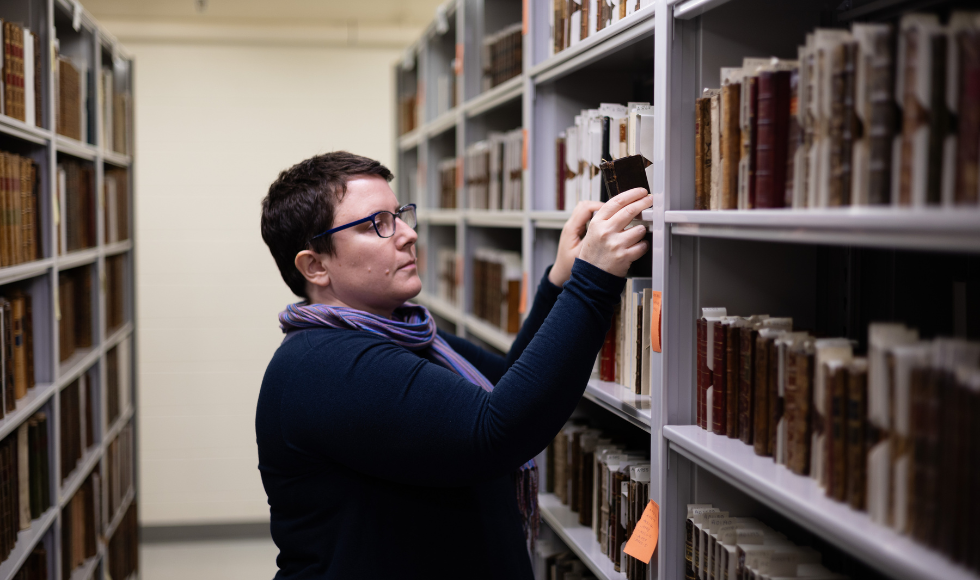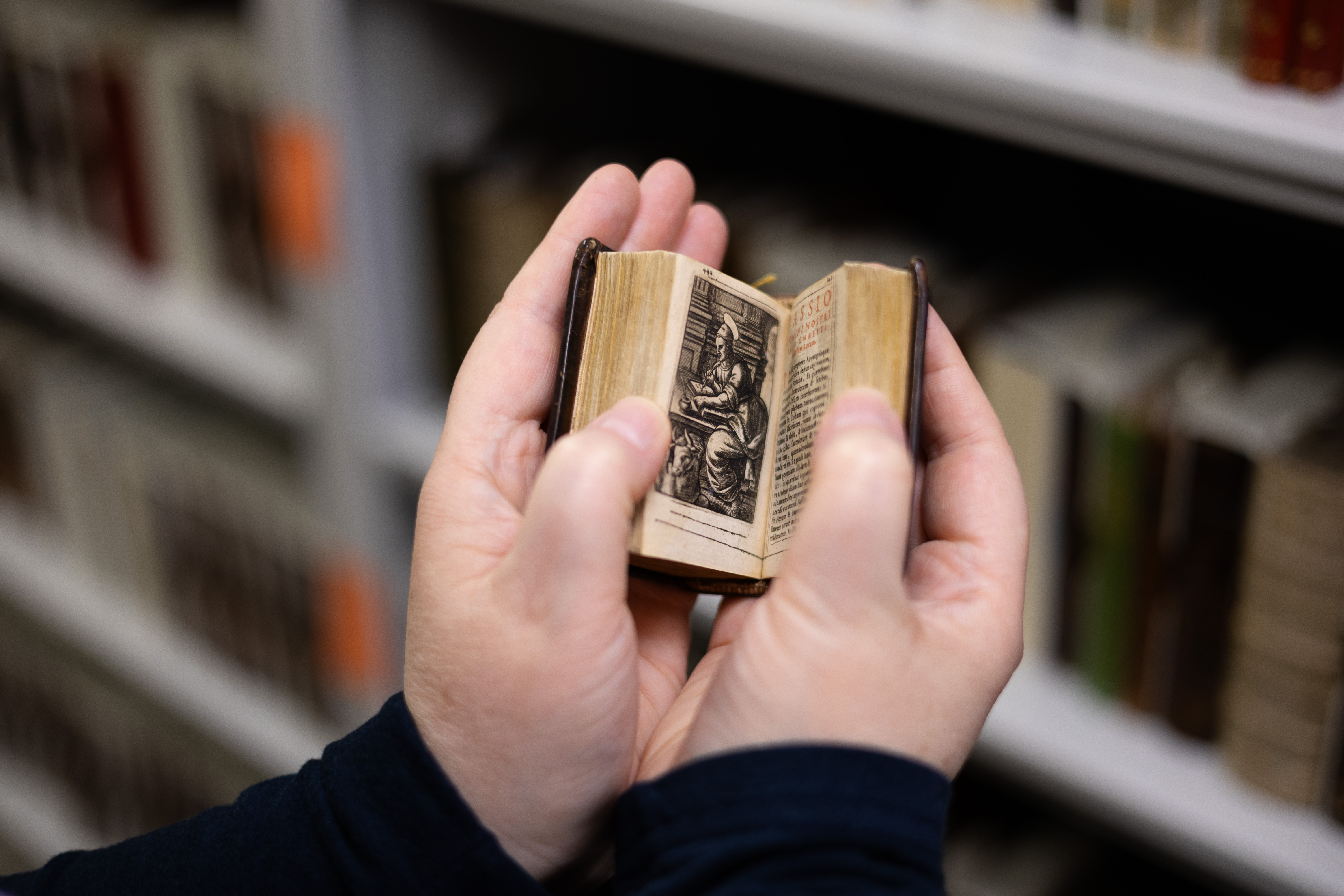Rare book discovered in libraries’ special collections

Ruth-Ellen St. Onge, distinctive collections cataloguing librarian, came across the book while working on an upcoming exhibit. Photo by Brad Leenstra/McMaster University Libraries
McMaster University Libraries’ William Ready Division of Archives and Research Collections is home to thousands of rare materials, and among them is a rare religious text that’s been hiding in the department’s shelves since the 1960s.
Ruth-Ellen St. Onge’s job as McMaster University Libraries’ distinctive collections cataloguing librarian is to delve into the intricate histories of rare books in the collection and to catalogue these findings for the benefit of researchers and the public.
On a day that seemed like any other, St. Onge was checking books for an upcoming exhibit that will showcase a variety of texts published by the Plantin Press, when she came across a rare book titled Officium beatae Mariae virginis, which translates to The Book of Hours of the Virgin Mary.
“While I was looking it up in the Universal Short Title Catalogue, I saw that there were some books of hours published in 1596 by the Plantin Press, but a lot of them were listed as lost books,” she said. “I started freaking out. This means that scholars knew from financial records that these books were printed, but no copies were known to exist anymore. That’s very significant — it means that McMaster has the only surviving copy.”
The book arrived at McMaster in 1965 when the university libraries’ archives and research collections acquired the Caselli collection.
St. Onge says that despite being listed as lost, it was known that McMaster had this book, though its significance was not emphasized in catalogue descriptions. This is because the book was acquired by McMaster prior to the publication of the first major Plantin Press bibliography.
“We knew we had it, someone cataloged it when it was acquired. We just didn’t realize the significance of the book until now because of all these new resources that are available to us,” she said. “It was lost in the sense that the Plantin scholars and bibliographers had never seen a copy and one hasn’t been described before. It’s kind of like we’re rediscovering it.”
The Plantin Press was one of the most successful and well documented printing and publishing enterprises in Europe. Religious texts were some of the most popular Plantin Press books, with Officium beatae Mariae virginis being a bestseller.

Printed in 1596 in Antwerp, Belgium, the tiny prayer book was written in Latin and sold across Europe, typically purchased by devout Catholics or members of religious orders. With its contents based on traditional prayer and ceremonies, the author of the book is listed as the Catholic Church. The name “book of hours” derives from the contents of the book, which consists of prayers meant to be recited at specific hours of the day.
Of the nearly 75,000 copies printed by the Plantin Press between 1589 and 1610, only 81 surviving copies have been identified, with McMaster’s being the only known surviving copy printed in this size and format with beautiful copper engraved illustrations. Many of these books did not survive, owing to a combination of their small size, extensive everyday use, and the ways religious practice changed over time.
The hidden special collections project, led by St. Onge, involves creating detailed descriptions of the thousands of materials housed in the university libraries’ archives and research collections. She says the rediscovery of this book is a perfect example of the work she’s doing for the project.
“I think ‘hidden’ is a better word than ‘lost’, because the significance was hidden until someone was able to do a more detailed description of the book,” said St. Onge. “We often know only basic details about items in our collection, but we need to uncover what we don’t know — what’s important, what’s unique, where we can get that information, and how we can communicate it in the catalogue records, through outreach, exhibits, teaching and so on.”
Wade Wyckoff, associate university librarian at McMaster University Libraries, says uncovering the significance of this book is a testament to the important work done by colleagues in archives and research collections.
“The hidden special collections project is proving tremendously valuable,” said Wyckoff. “We are cataloguing hundreds of items in our collection for the first time through this work, and, as exciting as it is to open those new resources for use, we are also making significant discoveries about our collections by revisiting previously catalogued materials. This project, along with the work done by others in the department, emphasizes the importance of preserving, describing, and returning to these rare and unique resources.”
Since the rediscovery of the book, St. Onge says she is working on updating catalogue records to reflect the book’s significance. She has also contacted the curators of the Plantin-Moretus Museum to let them know that McMaster has the book and plans to write a short article in a scholarly journal to inform others of the book’s existence.


